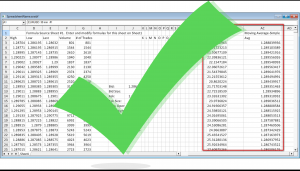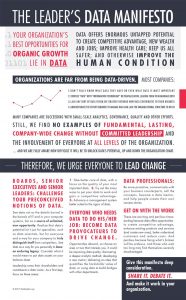 For complex work, a very simple app requires a very smart user. That point was driven home to me in Tableau Fundamentals class this week. I don’t see that as bad news at all.
For complex work, a very simple app requires a very smart user. That point was driven home to me in Tableau Fundamentals class this week. I don’t see that as bad news at all.
Not so long ago I wrote a piece that attempted to inject a bit of reality into the claims then made by some data visualization tool vendors. I cited unexpected challenges that those adopting such tools for their obvious and compelling data presentation abilities might face. The challenges included unexpectedly complex data integration, establishing solid reporting standards and practices, scaling report distribution as demand for the visualizations expands, and the conversion work that can result from version upgrades.
Although a Fundamentals class, the experienced and enthusiastic instructor and the small, intelligent student group combined to make the two days immensely valuable, going far beyond the basics on the program (more on specific lessons learned will appear in an upcoming post). The instructor’s focus on principles rather than recipes drove home this point: in order to effectively use Tableau you have to understand not only how to operate Tableau itself but also the underlying data management, usability, and statistics principles.
Could it be that adopting easy-to-use Tableau in place of, say, SSRS, Cognos, or SAS requires an upgrade in staff knowledge and expertise? Continue reading →
 scrutiny, NoSQL performance gains, and the needs of data scientists are quietly changing views and approaches toward data quality. The result: a pathway to optimism and data quality improvement.
scrutiny, NoSQL performance gains, and the needs of data scientists are quietly changing views and approaches toward data quality. The result: a pathway to optimism and data quality improvement.




 ta science or warehousing context, which is often where quality problems
ta science or warehousing context, which is often where quality problems  As you’ve read on this site and many others, the database world is well into a transition from a relational focus to a focus on non-relational tools. While the relational approach underpins most organizations’ data management cycles, I’d venture to say that all have a big chunk of big data, NoSQL, unstructured data, and more in their five-year plans, and that chunk is what’s getting most of the executive “mind share”, to use the vernacular.
As you’ve read on this site and many others, the database world is well into a transition from a relational focus to a focus on non-relational tools. While the relational approach underpins most organizations’ data management cycles, I’d venture to say that all have a big chunk of big data, NoSQL, unstructured data, and more in their five-year plans, and that chunk is what’s getting most of the executive “mind share”, to use the vernacular.